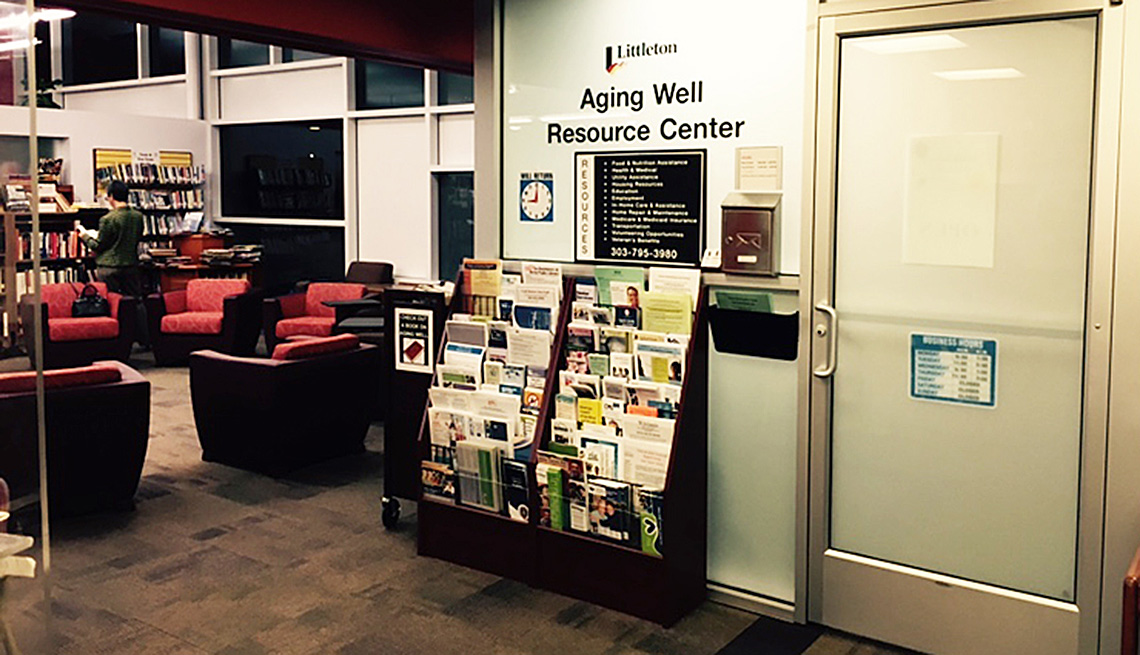Play all audios:
Penny says that although counties rather than the cities in the region typically handle human services type work, Littleton felt it had to help connect its older residents to the resources
the community had to offer. HOW IT GOT STARTED Penny commissioned Wilmesher, who had built the Greater Littleton Youth Initiative for the city, to come up with a plan. She spent a year
researching and visiting several Denver-area communities to see what others where doing in the aging field. Wilmesher also formed a task force — the Littleton Coalition on Aging Well — with
members from local nonprofit organizations, churches and government entities to brainstorm about possibilities. The task force formulated the idea of housing a one-stop office in a familiar
place — the library — where clients over the age of 50 could meet face-to-face (with an actual person!) who knew about community resources and could connect them via referrals with what they
needed. HOW IT WORKS Now open four days a week, four hours a day, the center has served more than 700 people since its opening in the fall of 2014, according to Wilmesher, who notes that
the center has had contact with an additional 1,000-plus people at various community events. Older residents and caregivers can either drop-in to the center or schedule an appointment. The
client then sits with Wilmesher or one of her two part-time employees to discuss what's going on: a housing crisis, an aging-in-place problem, the need for a caregiver to have some time
away. Wilmesher helps clients prioritize what's most urgent in their lives, then she talks about the available community resources, sending them off with a referral sheet listing the
contact information for individuals and agencies that can help. "The AWRC is structured to be a navigation service," explains Phil Cernanec, the former mayor of Littleton and a
member of the city council. "Some folks are still challenged by electronic searching and coordination." The center can provide assistance with issues related to food, nutrition,
health, medical treatment, utilities, housing resources, education, recreation, senior advocacy, employment, in-home care, home repair, Medicare, Medicaid, transportation, volunteer
opportunities, veteran's benefits, social security and caregiver support. What the Aging Well Resource Cent_er won’t do_ is provide referrals to any for-profit institutions. Among the
resources they do make clients aware of are the _Colorado Senior Resource Guidebook_, published by the Colorado Gerontological Society, and _Colorado Seniors Blue Book_, which provides
information about senior housing and caregiving. THE COST The Aging Well Resource Center is funded by the City of Littleton. Approximately $190,000 covers all center expenses, including
staff. When not meeting with clients, Wilmesher's behind-the-scenes work includes data collection, networking and researching new opportunities for seniors. HOW TO CREATE AN AGING WELL
RESOURCE CENTER 1. THE INITIAL STEPS INCLUDE: * Knowing what resources are already available and how they're accessed. * Meeting with and getting buy-in from local leaders. * Forming a
task force that involves community partners (such as organizations, businesses, agencies and individuals) who can help develop a workable plan. 2. SOME WORDS OF WISDOM: * "Listening to
your partners and the people who are already in the business is huge," says Wilmesher. * "Having a caring professional to manage the center is very important," believes
Cernanec. * "Be flexible," says Kelli Narde, communications and marketing director for the city of Littleton. "Any time you start a new program you constantly have to
adapt." * "Placing the center in a comfortable, familiar location that is already visited by lots of people is very important,” adds Linda Haley, division manager for Arapahoe
County Housing, Community Development and Senior Resources. 3. THE CHALLENGES: For Wilmesher, the biggest challenge was creating awareness. "People don’t know about such a resource
center as a concept, so they don’t know where to go looking for it,” she says. To help build awareness, the city hosts regular "Grab, Gab and Go" coffee, tea and refreshments
events at the library so residents can learn about the center's services. Also crucial: Finding the right data collection tools in order to process information about demographics and
resources so, says Wilmesher, "we can predict and more accurately plan for our current and future needs." _Vickie Bane is a Colorado-based freelance writer and a former staff
writer for People magazine._ _Published May 2016_ More from AARP.org/Livable Use the dropdown to choose a livability topic. Select a Subject

